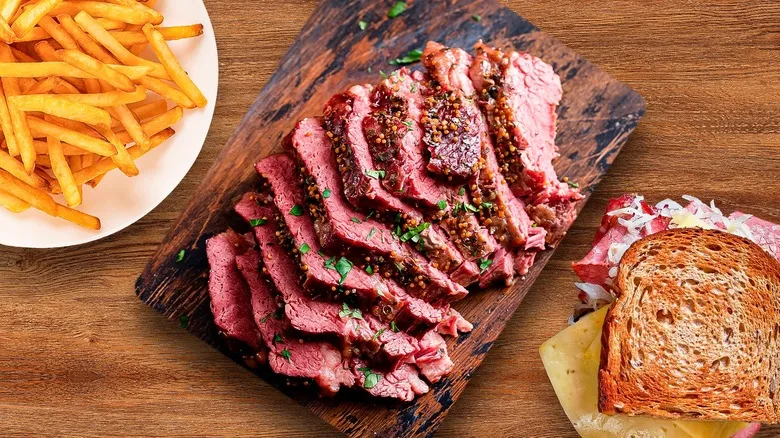Choose fresh over canned

Certain recipes or even whole cuisines often utilize canned corned beef, but our experts generally recommend opting for fresh corned beef instead. Sarri Harper, owner of Carnegie Deli, explains, "Although both types may share similar flavor profiles, canned corned beef tends to be mushier, saltier, and fattier compared to its fresh counterpart." Chef Nic Vanderbeeken, a corned beef specialist, adds, "While canned corned beef offers convenience, it frequently falls short in flavor depth and tenderness that comes from preparing it from scratch. Freshly made corned beef gives you the ability to control both the flavor and texture, which is essential for crafting a truly satisfying dish."
Fresh corned beef typically comes in three varieties. The first is pre-cured, pre-cooked slices. The second is a pre-cured cut of meat that requires cooking at home, usually by boiling for several hours (though it can also be prepared in a slow cooker, oven, or skillet). The third, and most involved option, is purchasing a raw cut of beef (usually brisket) that you can brine and cook yourself. You should be able to find one or more of these fresh corned beef options at your local deli or grocery store. Some companies, such as Carnegie Deli and Katz's Deli, even offer corned beef for online purchase, with shipping available throughout the U.S. and Canada (for Katz's).
Be creative with brine but choose the right cut of meat
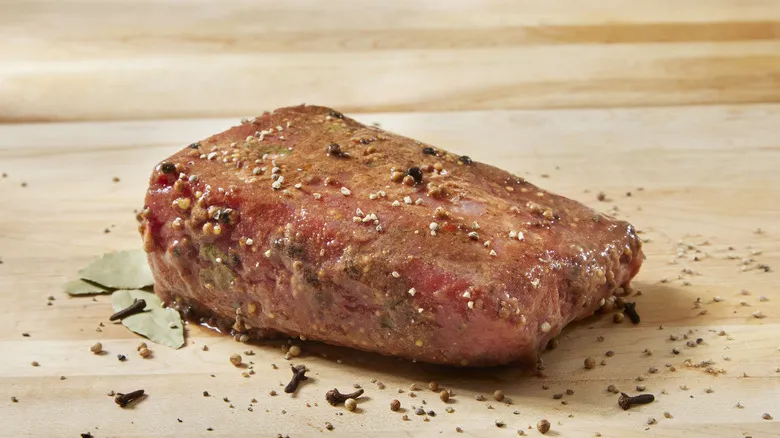
If you decide to prepare your own corned beef, it might seem overwhelming at first, but there's no need to feel intimidated. While you'll require kosher salt and pink curing salt (unless you opt for a nitrate-free version), you have plenty of flexibility when it comes to the spices you can incorporate into your brine. The saltiness of corned beef is often balanced with a touch of sweetness. Many chefs, including corned beef specialist Nic Vanderbeeken and Greg Dixon from Roberts Corned Meats, suggest adding brown sugar to the brine. Other common options include seasonings like peppercorns and garlic. Feel free to experiment and adjust the flavors to suit your personal preferences.
To achieve the best results, the cut of beef you select plays a significant role. While you can technically use any cut, brisket is widely regarded as the ideal choice for corned beef. Many chefs favor the flat cut of brisket, but Dixon advises purchasing the whole brisket (packer brisket), as one end, the point end, contains more flavorful fat, while the other end, the flat end, is leaner and easier to slice. Dixon refers to packer brisket as "the best of both worlds." Regardless of the cut you choose, steer clear of meat that is too lean, as fat is essential for adding flavor and moisture, which are key to creating delicious corned beef.
Take your time when brining and boiling

Whether you're preparing a store-bought brined corned beef or one you've brined yourself, you'll frequently encounter the term "low and slow" — referring to a low cooking temperature and the importance of not hurrying the process. As Sarri Harper notes, "Patience is essential when making corned beef." Generally, most chefs recommend soaking it in brine for a minimum of five days, but Nic Vanderbeeken suggests extending that to "at least seven to ten days."
Greg Dixon cautions that even if you've successfully brined your meat or are starting with pre-brined corned beef, many people struggle with the issue of overcooking. The most typical method for cooking corned beef is boiling, but Dixon emphasizes that boiling should actually be maintained at "a simmer or a low boil at most." He advises that this cooking process can take around three to four hours, but it's crucial to monitor your pot to ensure the water doesn't get too hot.
Replace a typical ingredient with corned beef
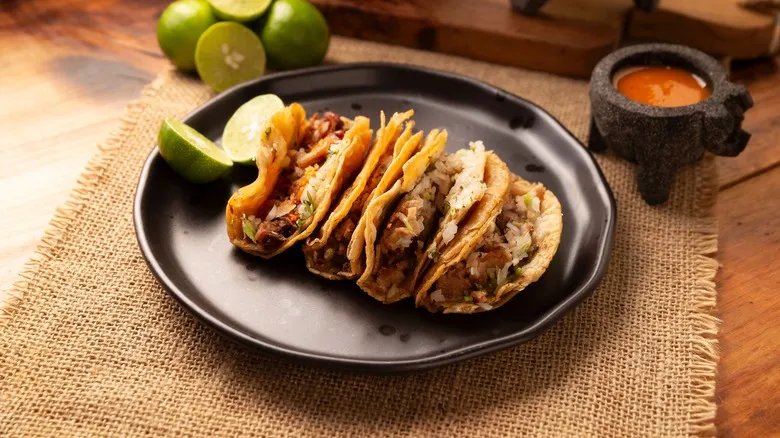
Are your usual meals starting to feel a bit monotonous? The next time you whip up one of your favorite recipes, consider adding some corned beef or substituting it for another ingredient. The richer, saltier taste of corned beef can invigorate dishes that have become routine, and pairing it with other ingredients may enhance its flavor as well. It’s a win-win situation, elevating both your standard meal and the corned beef.
Corned beef can be incorporated into nearly any savory classic. For example, try adding small pieces of corned beef to loaded baked potatoes, alongside your favorite toppings. You can also mix diced corned beef into your potato salad instead of ham. This bold addition will create a memorable twist on a beloved side dish. "I recently started making roasted Brussels sprouts with corned beef instead of bacon, and it has quickly become a favorite," said Sarri Harper. "It can replace pulled pork or carne asada in tacos or burritos, serve as a protein alternative in fried rice or casseroles, and it’s a fantastic substitute for a Sunday or holiday roast instead of ham, turkey, or prime rib," added Greg Dixon.
Make a classic Reuben
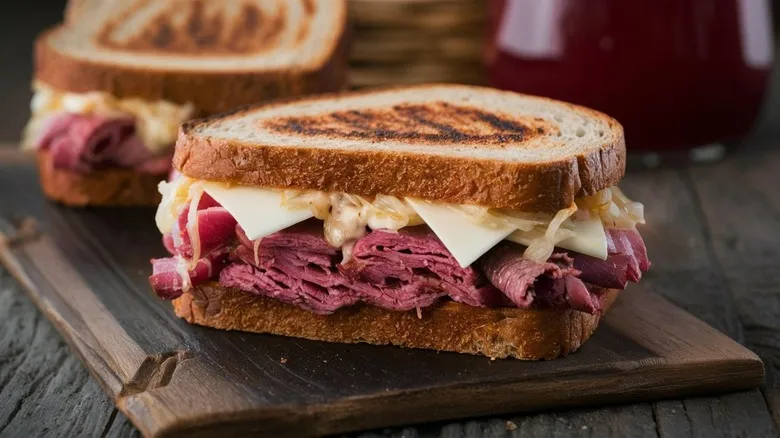
A beloved deli staple, the classic Reuben is a warm sandwich that features corned beef, Thousand Island dressing, sauerkraut, and gooey Swiss cheese, all nestled between slices of toasted rye bread. This delightful combination of flavors and textures has two possible origins. The family of Bernard Schimmel, a chef at his family's hotel in Nebraska, asserts that he invented the sandwich one evening in the 1920s, naming it after his friend Reuben Kulakofsky, for whom he prepared it. However, this claim has been contested, particularly by food historian Andrew Smith, who argues that the Reuben was first created in New York City, referencing an early 20th-century cookbook and other supporting evidence.
Regardless of its true origins, the Reuben remains a favorite corned beef dish. Jake Dell notes that the best-selling sandwich at Katz's Deli is the Reuben, and it's easy to see why. "A classic corned beef Reuben always lifts my spirits," remarked Sarri Harper. If you’ve never tried making a Reuben, why not give it a shot? Given its popularity, it just might be the ultimate way to enjoy corned beef.
Pair corned beef with fries

There's a reason many of us link corned beef with potatoes — the cured meat's texture and savory, salty flavor complement the starchy goodness of potatoes perfectly. However, this doesn't mean you have to stick to just boiled or sautéed potatoes. Some corned beef enthusiasts have a different preference for their spuds: French fries. "For me, nothing pairs better with corned beef than our steak fries," says Jake Dell of Katz's Deli. "Our steak fries are wonderfully crispy, with a hint of buttery flavor that makes them the ideal accompaniment to the salty, tender corned beef."
Of course, if you have a favorite style of French fry, feel free to use that instead. For example, waffle fries could offer an intriguing flavor contrast to your corned beef slices. If you're looking to shake things up, sweet potato fries might be worth considering. The combination of sweet and salty could introduce a unique and delightful twist to your dish.
Put it on a burger

While corned beef is a delicious sandwich filling and a star in its own right, its tender texture and rich, salty flavor also make it an excellent topping for burgers. In fact, corned beef might be the burger topping that many of us have been overlooking. It elevates the experience beyond bacon, delivering a similar savory kick but with a thicker texture and a more complex flavor profile thanks to its diverse brine ingredients. It's no surprise that Jake Dell mentions some staff at Katz's Deli "swear by putting [corned beef] on top of their cheeseburgers."
Enhance your corned beef-topped burger with your favorite vegetables and additional fillings, then finish it off with your preferred sauce. If you need some sauce inspiration, both Dell and Sarri Harper recommend mustard as the ideal condiment for corned beef. Dell describes it as "the perfect complement to the savory, salty, super tender beef," favoring Katz's house deli mustard for its deep tanginess. Harper, on the other hand, swears by Düsseldorf mustard, which she describes as a creamy, bold stone-ground mustard that balances the richness of the corned beef. Greg Dixon suggests his father's favorite, sweet hot mustard, which is a blend of mustard, brown sugar, and horseradish.
Serve it with a potato knish

Corned beef has its roots in Ireland, but the Eastern European Jewish community has played a significant role in its popularity, success, and flavor. Interestingly, for the Irish immigrants who arrived in America during the 19th and early 20th centuries, corned beef was a novel experience. Many had never encountered it until they reached Manhattan's Lower East Side, where they began purchasing this affordable meat from the local Jewish delis.
While corned beef is commonly served with boiled or sautéed potatoes, Sarri Harper prefers a more unique potato accompaniment: a potato knish. A knish is a fried pastry filled with seasoned mashed potatoes (and sometimes other ingredients). It originated in Eastern Europe and was introduced to the United States by Jewish immigrants in the early 20th century. For Harper, this beloved Ashkenazi Jewish delicacy and New York City staple pairs perfectly with corned beef. "Both comforting and delicious, the smooth texture and subtle flavor of the knish really lets the corned beef shine," she exclaims. This meal also represents a delightful fusion of the two cultures that have shaped corned beef into what it is today.
Consider going nitrate-free

Many classic corned beef recipes incorporate nitrates as a crucial ingredient because they aid in preserving the meat. While nitrates effectively serve as preservatives, they have also been associated with health issues, including colorectal and stomach cancers when used in this manner. Occasionally, it might be acceptable for most people to enjoy the typical variety of corned beef—often referred to as "red corned beef" due to the hue imparted by the nitrate-rich pink curing salt in its brine. However, there is a healthier option known as gray corned beef, which is made without nitrates and lacks the characteristic red color.
Although gray corned beef may appear to be a modern health trend, it is actually the traditional version made in New England. While this healthier and time-honored corned beef seems like a better choice, it does come with some drawbacks. For one, gray corned beef tends to have a higher salt content, as salt is the sole preservative used. This also results in a saltier flavor compared to red corned beef. Additionally, depending on your location, gray corned beef might be difficult to find, which could necessitate making it yourself. If avoiding nitrates is important to you, gray corned beef is a fantastic alternative.
Make a Filipino corned beef dish
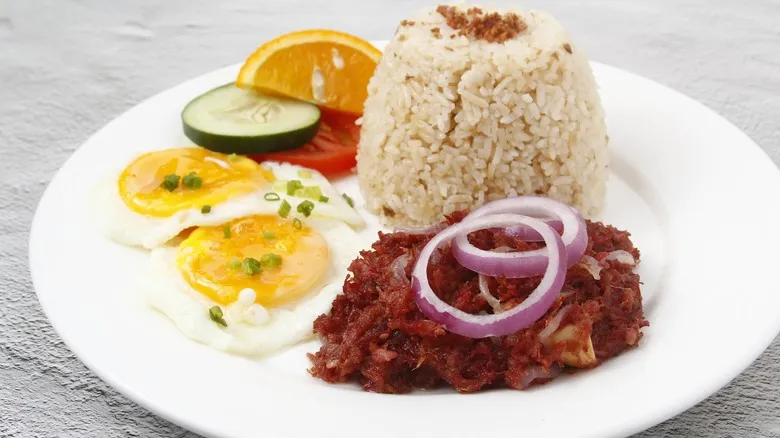
Corned beef dishes are quite popular in the Philippines, and it's easy to see why: they are flavorful and satisfying. Although it's generally discouraged in traditional cooking, many Filipino corned beef recipes rely on the canned variety of the meat. This trend has historical roots, as canned beef gained popularity in the Philippines during the American occupation (1898-1946) and has since become a staple in Filipino cuisine.
There are numerous Filipino corned beef recipes to try, but our top pick is corned beef silog (also known as cornsilog) — a delightful combination of sautéed canned corned beef, onions, garlic fried rice, and a fried egg. Typically, the onions are incorporated into the corned beef, while the egg and rice are served on the side, but feel free to mix everything together for an explosion of flavor. If you want to add or swap out any ingredients, don’t hesitate to get creative! Another beloved Filipino corned beef dish is ginisang corned beef, which resembles corned beef hash. It features canned corned beef (preferably the chunky variety) sautéed with potatoes. As with the previous dish, you can include any additional ingredients or seasonings that appeal to you. For both recipes, the key is to choose the highest quality canned corned beef available to ensure the best taste and texture.
Combine corned beef and your favorite foods
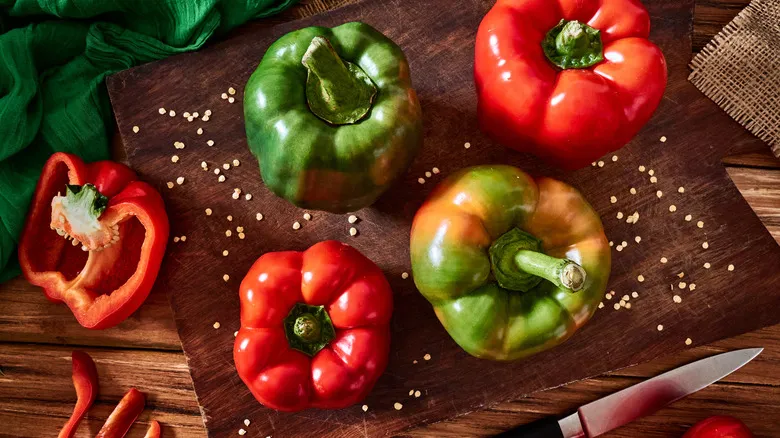
For many, corned beef serves as a comforting dish that stirs up fond memories. You might have a cherished corned beef recipe from your childhood, like the classic Reuben. For those of us in metro New York, it might be a towering corned beef sandwich on rye, accompanied by a pickle. Others may hold a special affection for timeless favorites like corned beef hash or corned beef and cabbage. While these dishes are close to our hearts, it's important to remember that corned beef can be used in countless other ways and can serve as a fantastic substitute in various recipes.
Take, for example, Nic Vanderbeeken's modern twist on traditional corned beef hash, which introduces exciting new flavors. "I mix the beef with diced potatoes, onions, and bell peppers, and top it off with a sunny-side-up egg," he explains. "This dish is not only comforting but also showcases the corned beef beautifully." Sarri Harper also offers creative ideas, such as a corned beef and cabbage quiche that she enjoys for breakfast. If you're looking to elevate your corned beef experience, don't feel confined to tradition—experiment with new corned beef dishes that incorporate other ingredients and flavors you love. The possibilities are endless with this delicious meat!
Recommended
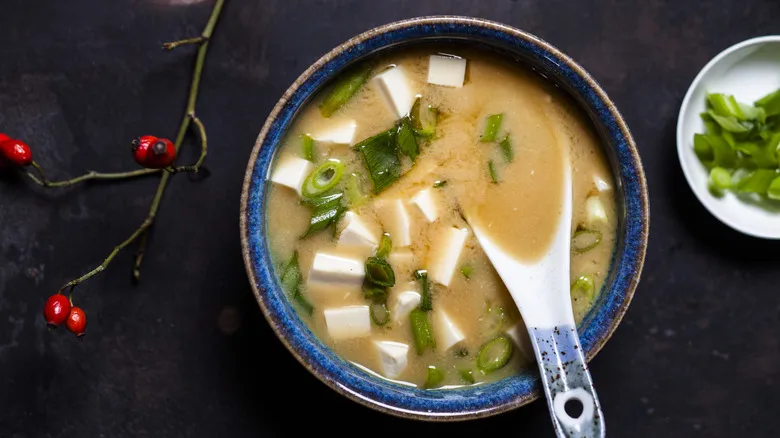
Instant Miso Soup Is The Start To The Easiest Breakfast Ever

Pickle Juice Is A Worthy Hot Sauce Alternative - Here's Why

Scorch Your Canned Tomatoes For Crave-Worthy Sandwiches

Cook Smarter: When To Use The Top, Middle, And Bottom Racks In Your Oven
Next up

